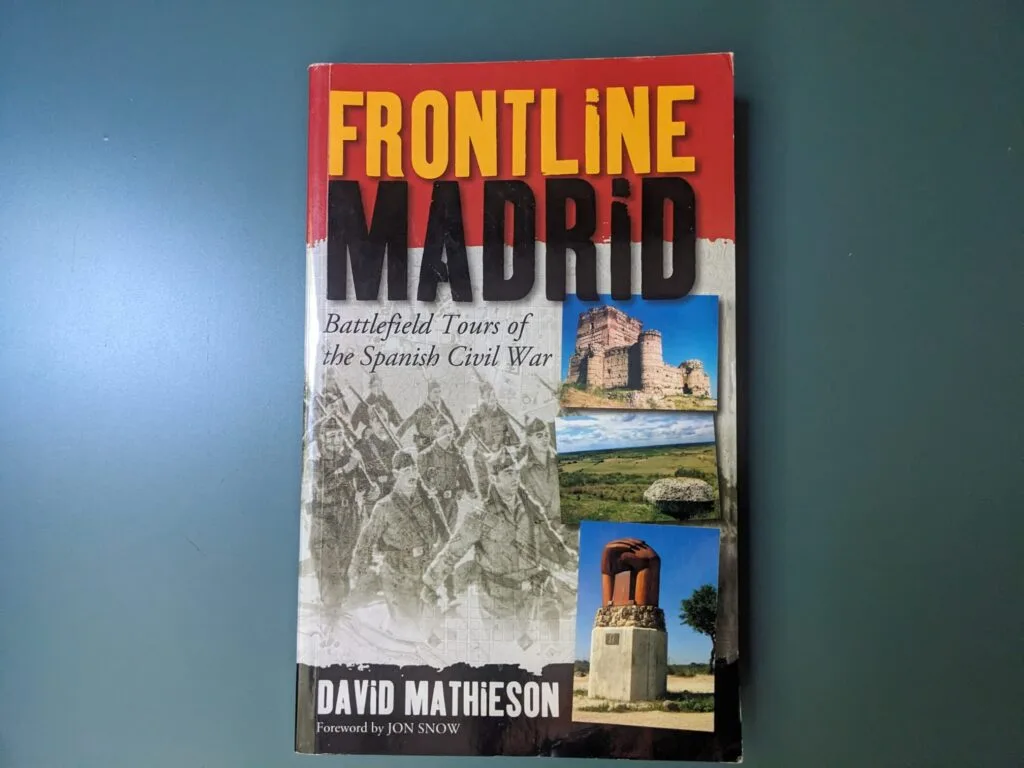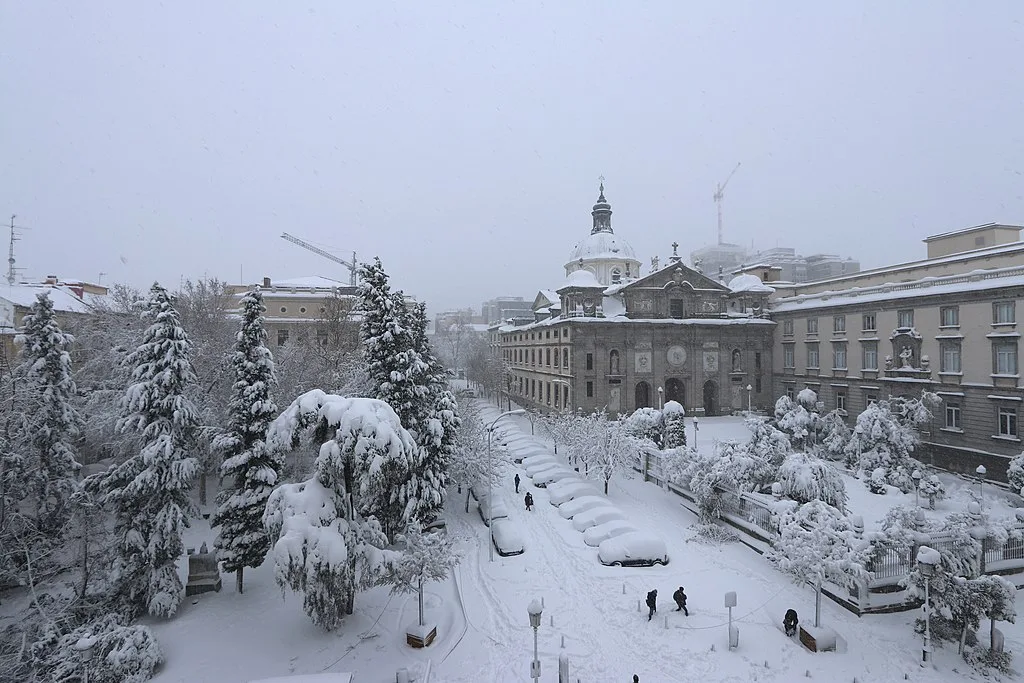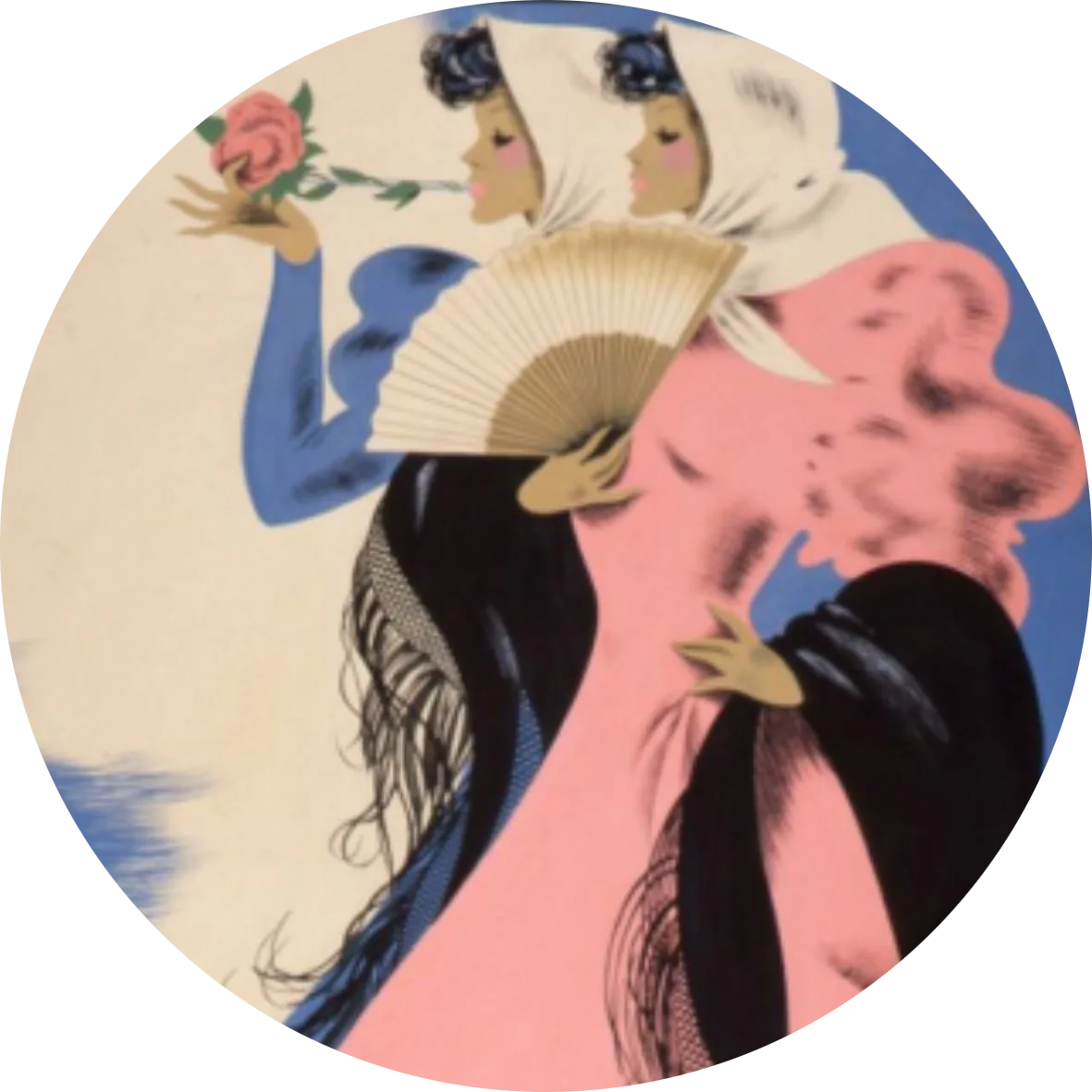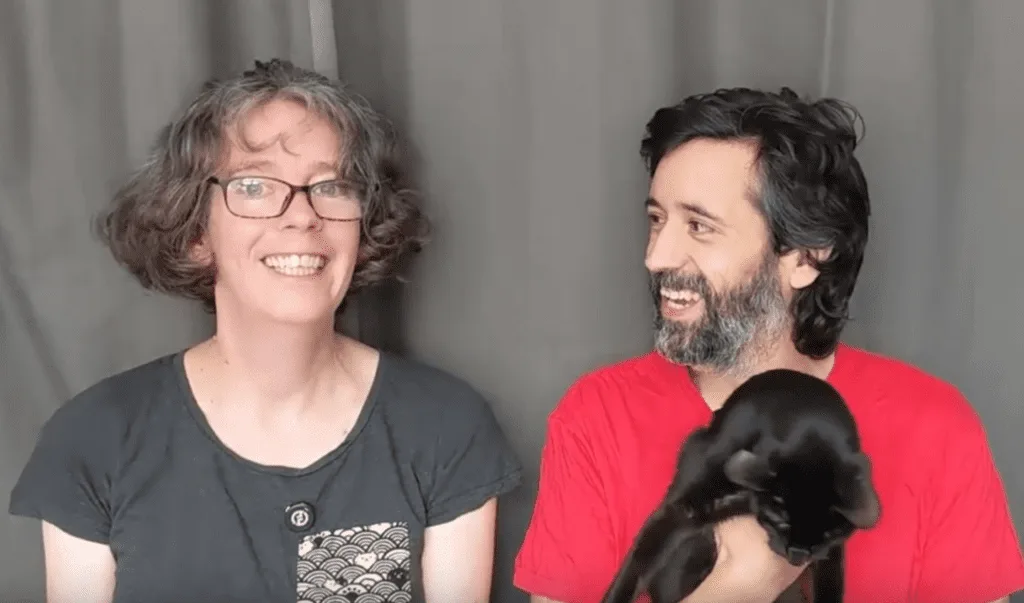
Photo from Guide to Madrid’s Literary District by John Dapolito
Last year my book A Guide to Madrid’s Literary District was published by Secret Kingdoms and this year, I’ve got not one but four new titles out! Okay, admittedly three of these are Lonely Planet guides (the big Madrid guide, the pocket guide and the Madrid chapter of the Spain guide) but the last, Quiet Madrid, is 100% mine. To celebrate the launch of Quiet Madrid, I’ve put together a reading list of other great books about Madrid that will give you a good grounding in local lore. Whether you’re a history buff or a fiction fan, there are plenty of books to choose from. Here are eight of my favorites:
1) Hidden Madrid by Mark & Peter Besas

My very first reference book on the city, I still consider Hidden Madrid the best English-language historical guide to Madrid. Covering the main historical sites in the city center, it’s well-researched and easy to use as a reference – though my 2014 copy is a little heavy to cart around! The book is written in an accessible entertaining style by father/son team Mark and Peter Besas and covers subjects such as Joseph Bonaparte’s secret tunnel, Dr. Velasco’s mummified daughter, and the Auto de Fe in Plaza Mayor.
2) Fortunata and Jacinta by Benito Pérez Galdós

Born in Las Palmas, Galdós loved Madrid like only a non-native can. However, he didn’t always see the city through rose-tinted glasses. Spain’s answer to Dickens he was extremely concerned with the dreadful living conditions suffered by Madrid’s working classes. In Fortunata and Jacinta there are hair-raising depictions of life in the city’s slums that were meant to shock the wealthier classes into taking action. Published in 1887, the story is about a privileged young man who has an affair with a working-class woman called Jacinta yet abandons her when she becomes pregnant and is quickly married off to his cousin Fortunata. I won’t include any spoilers beyond saying that things really begin to heat up when Fortunata fails to conceive.
3) Frontline Madrid by David Mathieson

With reams of books written on the subject, the Civil War is a daunting subject for the uninitiated. Which is why this book is so good. Focussing only on the protracted siege of the city, it gives readers a good basic understanding of the background to the conflict through an accessible question and answer section in the beginning before diving into details that allow you to understand exactly how the siege played out geographically. Best of all, Frontline Madrid contains a map that takes you through areas that were key flashpoints in the battle. I also ought to add that David has agreed to come on the podcast soon to talk about the siege of Madrid, so look out for that.
4) The Forging of a Rebel by Arturo Barea

Barea’s Forging of a Rebel trilogy cannot be beaten for a personal perspective on the Civil War. Born in extremely impoverished circumstances, Barea managed to “better himself” after winning a scholarship to study at the Catholic Escuelas Pias school in Lavapiés. However, he never forgot his roots and was a staunch socialist and humanist throughout his life. The first of the trilogy details his childhood in the city and is an absolute treasure trove for those with an interest in turn-of-the-century Madrid. However, the last is the most interesting historically and details the time Barea worked in the Telefonica building censoring the work of journalists such as Hemingway during the Civil War. Witnessing key events like the burning of the Escuelas Pias and the massacre at the Montaña Barracks, Barea’s book is essential reading for anyone with an interest in the conflict.
5) Winter in Madrid by CJ Sansom

Sansom’s Winter in Madrid is the story of Harry Brett a British spy who has been charged with getting information out of old school friend Sandy, who happens to be collaborating with Franco’s regime. Detailing the dire state of war-torn Madrid, the book vividly brings to life the suffering of Spain’s vanquished underclasses. Once Madrid fell to Franco, many loyal to the Republic, including foreign fighters in the International Brigades, faced firing squads or were shunted off to prisons and this story is also about a mission to rescue an imprisoned Communist member of the Brigades from just such a fate.
6) Leaving the Atocha Station by Ben Lerner

As this list runs more or less chronologically, this favourite of mine undeservedly wound up at the bottom. Drenched in cynicism, this is the story of a young poet who comes to Madrid on a scholarship ostensibly to study the work of Lorca. We soon discover that the hero is more concerned with his own self-image which is both inflated and deflated at various stages in the story during intrigues with young Madrilenians. An extremely well-written read, the book is as much about what it means to be an American abroad as it is about the city itself. With the city flooded more than ever with foreign tourists, its critique of cultural imperialism is even more biting today than it was when it was first published back in 2011.
7) Quiet Madrid: Tranquil Spaces in Hidden Places

Discover another side to Spain’s bustling capital
Madrid captivates visitors with its vibrant plazas, lively tapas bars, and world-class museums – but beyond the tourist crowds lies a more peaceful world waiting to be discovered. Quiet Madrid reveals tranquil spaces and hidden places that most travelers never find. The perfect companion to the Lonely Planet guidebook I worked on last year, this project shows another dimension to the city.
Featuring my original photography and years of insider knowledge, this guidebook helps you:
- Time your visits perfectly to experience Madrid’s attractions at their most peaceful moments
- Explore five distinctive neighborhoods through detailed walking itineraries rich with historical context
- Discover hidden gems across thoughtfully organized categories:
- Museums and galleries without the crowds
- Tranquil green spaces for reflection
- Peaceful churches and convents
- Libraries and bookshops for quiet browsing
- Calm bars, cafés, and restaurants
- Relaxed shops and cinemas
As an interactive ebook, Quiet Madrid connects you to additional resources through embedded links, including my blog with deeper historical insights about these special places.
Buy a copy today and escape the tourist traps to discover the peaceful heart of Madrid.
8) A Guide to Madrid’s Literary District

My book about Barrio de las Letras, aka Huertas, came out last month. If you’re interested in the literary history of Madrid and want to improve your Spanish, this bilingual book is a good one to pick up:
This guide takes you on a rollicking ride through Madrid’s literary past, starting in the 16th century when a rural area became the new capital’s literary hub attracting great writers like Cervantes and Lope de Vega. Full of gossip and intrigue, A Guide to Madrid’s Literary District details the rivalries, spats and political upheavals that shaped the history of Barrio de las Letras. From Siglo de Oro authors to modern writers like Dumas, Lorca, and Hemingway, this is an entertaining history of the area told through the lens of Madrid’s literary scene.
- Who was Cervantes’ worst frenemy?
- Why did Galdos’ Electra cause a riot?
- What was librera (bookseller) code for during the dictatorship?
The answers to these questions and more can be found within the pages of A Guide to Madrid’s Literary District. An introduction to the literary history of the neighbourhood, from Cervantes to Laurie Lee, this is a must-read for any visitors to the area.
Planning a visit to Madrid? Why not book a tour with me? The author of Lonely Planet’s Pocket Guide to Madrid, I can give you an insider’s perspective on the city. Get in touch for more information.




